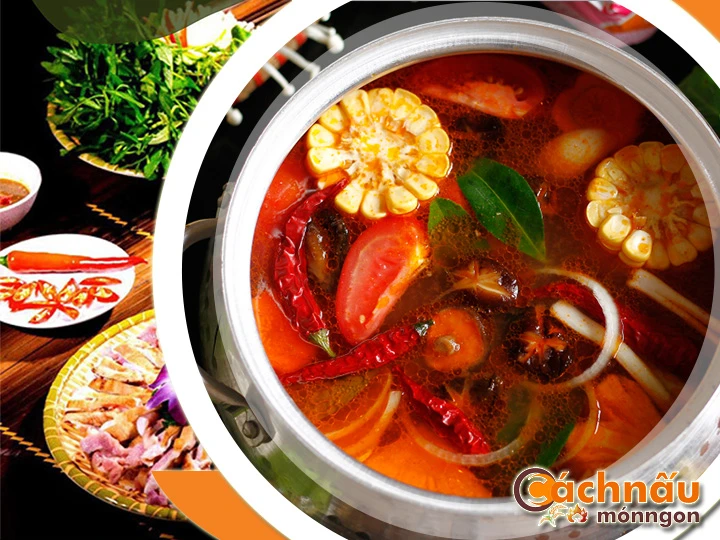Master the Traditional Rabbit Hot Pot Tips for Beginners - Lẩu thỏ
Master the Traditional Rabbit Hot Pot Tips for Beginners - Lẩu thỏ
Blog Article
Hot pot rabbit, a delicious and culturally significant meal, has been revered across global culinary styles for centuries.

This comprehensive guide explores the whole thing you need to realize about rabbit hot pot, from its historical background to modern variations, nutritional values, and easy-to-follow steps for creating the perfect meal at home. Whether you are a professional cook or a curious beginner, this guide will encourage and guide you to master the art of rabbit hot pot.
UNVEILING THE LEGACY IN ADDITION TO CUSTOMS CENTERED AROUND {BRAISED RABBIT DISH|HEARTY RABBIT MEAL|RABBIT HOT POT|RABBIT STEW|BUNNY CASSEROLE|RABBIT CUISINE|STEWED RABBIT
Rabbit hot pot stands as a distinctive and traditional dish with meaningful customs in different parts of the world. Its admiration stems not only from its flavorful flavor but also from its past and cultural importance.
Rabbit hot pot represents a special and classic dish with deep customs in various regions. Its admiration stems not only from its savory flavor but also from its historical and cultural significance.
- Historical Roots: Braised bunny dish started in rural areas where rabbits were a plentiful, valuable food source. In traditional Chinese culture, it was a loved recipe, particularly during festivals.
- Adopted in Various Places: In Western regions like Spain, rabbit was traditionally used in soups, evolving into modern versions of rabbit stew as the dish rose in worldwide popularity.
2. Traditional Rabbit Cuisine influencing Asian Traditions.
- China: Known as the traditional rabbit hot pot, rabbit hot pot is a staple of the culinary traditions of Sichuan, well-known for its spicy flavors and cherished at family gatherings.
- Throughout Korea and Japan: While less frequent, rabbit hot pot is occasionally enjoyed as a herbal dish in Korea, or incorporating elements of traditional nabemono dishes in Japanese cuisine, combined with local produce and flavoring ingredients.
- Throughout Vietnam: Although rabbit hot pot is not typically eaten every day, it is recognized during important celebrations or in villages where rabbit meat is abundant. It is often seasoned with distinctive spices such as aromatic lemongrass, spicy ginger, and chili, paired with fresh vegetables like kangkong, mustard greens, or mimosa vegetables. This dish is loved for its unique flavor and high nutritional value, frequently prepared for intimate gatherings.
Tại Việt Nam, tuy không hẳn là món ăn phổ thông thường nhật, nhưng nổi bật trong các sự kiện lớn hoặc ở các vùng quê, nơi thịt thỏ dồi dào. Thường được nêm nếm bằng các loại gia vị như sả, gừng, và ớt tươi, kết hợp với rau ăn kèm như rau nhút. Món ăn này rất được ưa chuộng nhờ vị ngon độc nhất và tính bổ dưỡng, thường là món ăn chính trong các bữa tiệc gia đình.
3. Braised Bunny Dish throughout European Culinary Traditions.
- Within France: Traditionally served as a warming meal with a red wine base, fragrant herbs such as rosemary, and vegetables like carrots and potatoes. Rabbit hot pot is a cherished recipe for holiday meals.
- In Italy: The dish cách làm lẩu thỏ called “Cacciatore”, featuring rabbit stewed in tomato and wine sauce, is a culinary root of hot pot-style rabbit dishes.
HOW TO COOK RABBIT HOT POT: RECIPES AND TECHNIQUES
Rabbit hot pot is a versatile dish that combines fresh ingredients, flavorful broths, and unique cooking techniques to create a filling and delicious feast. Below are detailed insights into the primary methods and methods to master rabbit hot pot.
Essential Recipe for Rabbit Hot Pot
* Required Ingredients:
- 1 whole rabbit (cut into pieces)
- 4 cups of broth (chicken)
- Vegetables (potatoes)
- Spices and herbs (garlic)
- Seasonings (salt)
- Optional: rice for serving
* Method:
- Prepare Your Meat: Clean and chop the rabbit into pieces. Marinate with salt, pepper, and a drizzle of soy sauce for 30 minutes to enhance the flavor.
- Prepare the Broth: Heat a pot with a bit of oil. Fry garlic and sliced ginger until fragrant. Add your preferred broth and bring it to a simmer.
- Simmer the Rabbit: Add the rabbit pieces into the pot and let them simmer on low heat for 30-40 minutes until tender.
- Include the Veggies: Add your chosen vegetables and cook until they are perfectly cooked but still bright.
- Present: Transfer the hot pot to a serving dish. Serve with side dishes and side options like rice or noodles.
Mastering Rabbit Hot Pot Techniques
- Seasoning:
. Marinate the rabbit with a combination of salt, pepper, and seasonings to intensify its natural flavor.
. For more complexity, use soy sauce or a mix of fresh herbs like rosemary and thyme.
- Building Layers of Flavor:
. Start by simmering the rabbit in the broth to draw out its rich flavor.
. Gradually add vegetables based on their texture needs.
- Optimal Cooking Duration:
. Avoid overcooking the rabbit, as it can turn chewy.
. Test for completion by checking if the meat falls off the bone.
- Broth Adjustments:
. Perfect the flavor by adding additional seasonings as needed.
. Experiment with different broth bases, such as spicy Sichuan-style variations.
Tips for Success
- Choose Freshness: Always choose fresh rabbit meat and seasonal vegetables for the top flavor.
- Balance Flavors: Be mindful of the sweetness in the broth. Sample and tweak frequently during cooking.
- Sauce Pairings: Offer a selection of sauces like sesame paste or savory soy mixes to enhance the dining experience.
- Serving Style: Use a communal pot or serve the hot pot as a focal point to promote sharing.
By perfecting these methods and recipes, you can create a rabbit hot pot that’s delicious and attractive, turning it into a star attraction for any gathering or occasion.
Report this page
